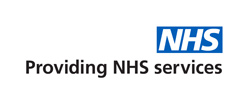You can check your test results by telephoning the surgery after 14:00. Please do not telephone in the mornings as the reception staff will ask you to call again after 14:00.
Please note that we have a strict policy regarding confidentiality and data protection. In this respect we will only give out results to the person they relate to unless that person has given prior written permission for their release or if they are not capable of understanding them.
Most blood tests are available within 48 hours after blood is taken.
Plain X-rays reports are usually available after 72 hours.
Results such as urine, stool or swab cultures are also usually available after 72 hours.
In all cases certain tests may take much longer, for example if the hospital has to send them away for processing.
Tests ordered by hospital clinics are not usually sent to us – if in doubt you should contact the hospital.
Important note
We do not usually contact patients about results: there are just too many coming into the surgery. It is your responsibility to ensure your results are satisfactory.
Blood Tests
A blood test is when a sample of blood is taken for testing in a laboratory. Blood tests have a wide range of uses and are one of the most common types of medical test.
For example, a blood test can be used to:
- assess your general state of health
- confirm the presence of a bacterial or viral infection
- see how well certain organs, such as the liver and kidneys, are functioning
A blood test usually involves the phlebotomist taking a blood sample from a blood vessel in your arm. and the usual place for a sample is the inside of the elbow or wrist, where the veins are relatively close to the surface. Blood samples from children are most commonly taken from the back of the hand. The child’s hand will be anaesthetised (numbed) with a special cream before the sample is taken.
